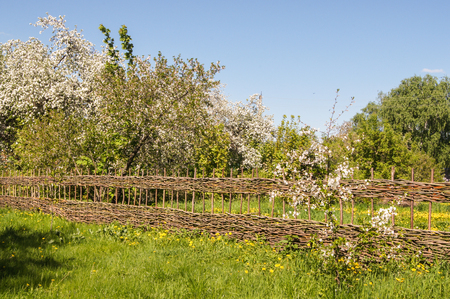Understanding Allotment Waste
If you’ve spent any time pottering about on a British allotment, you’ll know that gardening is as much about managing waste as it is about growing carrots and runner beans. From the first days of spring sowing to the last autumn clear-out, allotments across the UK produce a surprising amount of waste. Typical types include grass clippings from mowing pathways, pruned branches from fruit bushes, withered leaves, stalks from harvested crops, and even the odd pile of old compost bags or netting. There’s also kitchen peelings brought down for the compost heap and sometimes larger items like broken canes or rotten wooden boards. Why does this matter? Well, proper waste management isn’t just about keeping your plot tidy – it’s at the heart of sustainable gardening. If left unchecked, waste attracts pests and diseases, leads to unpleasant odours, and can even breach allotment site rules. On the other hand, effective handling of waste—especially through composting—means we return valuable nutrients to our soil, cut down on what goes to landfill, and play our part in protecting the local environment for future generations. It’s a bit like the wisdom passed down through generations: “Waste not, want not.” By understanding what we throw away and why it matters, we lay the groundwork for healthier plots and a greener community.
2. The Basics of Composting
If you’ve ever wandered down an allotment path on a crisp morning, you’ll know there’s more to gardening than sowing seeds and pulling weeds. Composting is at the heart of sustainable gardening, transforming kitchen and garden waste into nourishing compost for your plot. Understanding the essential principles not only helps reduce waste but also ensures your soil stays healthy year after year.
What Can You Compost?
The golden rule is to balance ‘greens’ and ‘browns’. Greens are nitrogen-rich materials like grass clippings and vegetable peelings, while browns provide carbon, such as dried leaves and cardboard. Getting this mix right encourages efficient decomposition.
| Greens (Nitrogen) | Browns (Carbon) |
|---|---|
| Vegetable peelings | Cardboard (shredded) |
| Grass cuttings | Dried leaves |
| Coffee grounds | Paper (uncoated) |
| Tea bags (plastic-free) | Wood chippings |
| Fruit scraps | Egg cartons |
What Should You Avoid?
While it might be tempting to toss everything onto the heap, some items will cause more harm than good. These attract pests or slow down decomposition:
- Meat, dairy, and cooked foods
- Citrus peels in large quantities
- Weeds with mature seeds or invasive roots
- Glossy paper or magazines
- Pet waste from carnivorous animals
The Science Behind Effective Decomposition
A successful compost heap relies on three essentials: air, moisture, and the right balance of materials. The bacteria and worms doing the hard work need oxygen—so turning the pile every few weeks is crucial. Keep the compost moist, but not soggy; think of a wrung-out sponge. If you notice a sour smell or things aren’t breaking down, it may be too wet or lacking air—easy fixes with a bit of turning and adding dry material.
A Few Wise Tips from Allotment Veterans
Remember what old Mr. Jenkins used to say: “Feed your soil and it’ll feed you.” Regularly adding well-rotted compost improves soil structure, retains moisture during those unpredictable British summers, and keeps your veg patch thriving without resorting to chemical fertilisers. Composting isn’t just practical—it’s an age-old tradition that brings communities together around a shared respect for the land.
![]()
3. Setting Up Your Allotment Compost System
Choosing the right composting method for your allotment is a cornerstone of reducing waste and supporting sustainable gardening practices across the UK. Before you get started, it’s wise to assess your plot’s size, soil type, and the guidelines set by your local council—many councils provide recommendations or even restrictions on composting methods to prevent nuisances such as odour or vermin.
Assessing Your Plot Size
If you’re working with a modest half-plot, a simple wooden slatted bin or a well-ventilated plastic dalek composter often suffices. These are tidy, space-efficient options that keep rodents out and can be tucked into a shady corner. For larger plots, consider building twin or triple bay compost bins using reclaimed pallets; this setup allows for easy turning and maturing of compost in stages, which is ideal for handling greater volumes of green waste throughout the growing season.
Complying with Local Council Guidelines
It’s always best to check with your allotment committee or local authority before installing any permanent structure. Most British councils encourage composting but may have specific rules regarding bin height, placement from boundaries, and acceptable materials. Open heaps are sometimes discouraged due to pest concerns, so enclosed systems tend to be preferred.
Installing Your Compost System
Position your bin on bare earth if possible—this encourages worms and micro-organisms to migrate in from the soil below. Avoid placing it directly against fences or sheds to allow airflow and access for maintenance. If you’re short on space or want to speed up decomposition, a hot composter such as a Green Johanna or Hotbin is an excellent investment—these units break down kitchen and garden waste quickly, even in colder months, though they do cost more upfront.
Ultimately, the key is to match your composting system to your needs: smaller bins for lighter use; larger bays for keen growers; always keeping within council rules. With thoughtful planning and the right setup, you’ll soon turn allotment trimmings into rich compost that feeds both soil and soul for seasons to come.
4. Best Practices for Compost Maintenance
If you want your allotment compost heap to work as hard as you do, a bit of regular TLC is essential. Over the years, I’ve learnt that keeping compost healthy is less about strict rules and more about steady routines—much like making a good cup of tea. Here’s how you can keep your compost ticking along nicely, reducing waste and enriching your garden beds in the process.
Turning Your Compost: Letting It Breathe
One of the golden rules is to turn your compost regularly. This introduces oxygen, which helps the beneficial microbes break down materials faster. Aim to give your heap a good mix every fortnight or so, especially in warmer months when decomposition speeds up. You don’t need fancy tools—a sturdy garden fork does the job just fine. Think of it like fluffing up a duvet; you want everything well aerated and not too compacted.
Watering Wisely: Not Too Wet, Not Too Dry
Moisture is key to speedy composting but getting it right can be tricky, especially with Britain’s unpredictable weather. The compost should feel like a wrung-out sponge—damp but not soggy. If it’s looking dry, add water (rainwater from your butt is best). If it’s too wet, mix in some dry browns like shredded newspaper or straw. Here’s a handy table to help you spot what’s going wrong:
| Problem | Possible Cause | Solution |
|---|---|---|
| Too Wet | Excess green materials or heavy rain | Add dry browns, cover heap if needed |
| Too Dry | Lack of rain or excess woody material | Add water or more green scraps |
Maintaining Balance: Greens and Browns
A healthy compost heap thrives on balance—roughly equal amounts of nitrogen-rich ‘greens’ (veg peelings, grass clippings) and carbon-rich ‘browns’ (cardboard, autumn leaves). Layering them as you go helps prevent unpleasant smells and ensures everything breaks down evenly. Remember, if your pile starts to pong like old socks, it probably needs more browns and a good turning!
Extra Tips from Seasoned Allotmenteers
- Chop up larger pieces before adding—they’ll break down quicker.
- Avoid adding cooked food or meat—these attract pests and slow things down.
- If you’re short on greens in winter, coffee grounds are an excellent addition.
Patience Pays Off
Composting isn’t a race; it’s about consistency over time. With these simple practices in place, you’ll soon have rich, crumbly compost ready for mulching your spuds or feeding your roses—and less waste heading off-site. Now that’s what I call gardening the British way.
5. Using Finished Compost on Your Allotment
There’s a special satisfaction when your compost is ready – dark, crumbly, and smelling pleasantly earthy. Knowing when it’s mature is key; typically, well-rotted compost takes between six months to a year, depending on the materials and your turning routine. The best time to apply it is either in autumn, as you clear away spent crops, or in early spring before planting begins.
For vegetable beds, spread a generous layer – about 5cm (2 inches) thick – over the surface. There’s no need to dig it in; let the worms and weather do the work. This not only improves soil structure but also adds valuable nutrients just where hungry veg like carrots, brassicas, and beans need them most.
When it comes to flower borders, mulching with mature compost helps retain moisture, suppress weeds, and feed perennials as they come into growth. Simply scatter a similar 5cm layer around established plants in early spring. Take care not to smother young shoots; instead, tuck the compost gently around their base.
Fruit patches, whether strawberries or currant bushes, also benefit from an annual top-dressing of finished compost. Apply after harvesting in late summer or early autumn, taking care not to pile compost against stems or crowns to prevent rot. This practice encourages stronger root systems and tastier harvests next season.
Remember, patience pays off. Home-made compost will always outperform shop-bought alternatives because it’s tailored by you for your own plot’s needs. Regular applications restore life to tired soils and keep your allotment thriving year after year—a proper old-fashioned method that stands the test of time.
6. Getting Involved: Community Composting on Allotments
One of the most rewarding aspects of allotment gardening is the strong sense of community that develops among plot holders. When it comes to composting and reducing waste, there’s a real opportunity to embrace a collaborative spirit, pooling resources and sharing knowledge for the benefit of all. By coming together as a group, you can make your collective composting efforts far more efficient and effective than going it alone.
Pooling Resources for Better Results
Not everyone has the space or materials to create the perfect compost heap on their own plot. By combining green waste—such as grass clippings, vegetable peelings, and prunings—with woody or bulky brown matter from multiple plots, you can achieve a better balance for decomposition. Some allotment sites have communal compost bins or bays where everyone contributes their waste and shares in the finished product. This not only maximises the use of available materials but also saves money on buying in compost.
Sharing Tips and Experience
There’s no substitute for practical experience, and every plot holder will have their own tried-and-tested methods for composting success. Sharing tips on layering materials, turning heaps, or even troubleshooting common problems like slow decomposition or bad odours can help everyone improve their results. Regular chats over a cuppa or informal workshops organised by keen gardeners can be invaluable sources of insight, especially for those just starting out.
Building a Supportive Community
When everyone pitches in, not only do you reduce waste collectively but you also build stronger relationships with your neighbours. A supportive allotment community makes gardening more enjoyable and helps newcomers feel welcome. Working together towards sustainable practices like composting fosters pride in your site and ensures that everyone benefits from healthy soil and reduced landfill contributions.
Encouraging a community approach to composting is more than just practical; it’s about nurturing a culture of sharing and learning. By supporting each other, sharing resources, and passing on wisdom, you help ensure that your allotment remains productive, sustainable, and welcoming for years to come.


